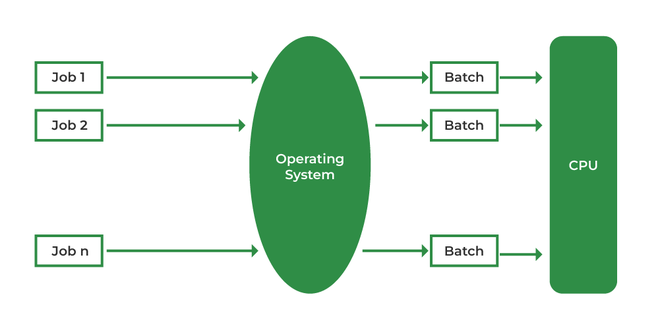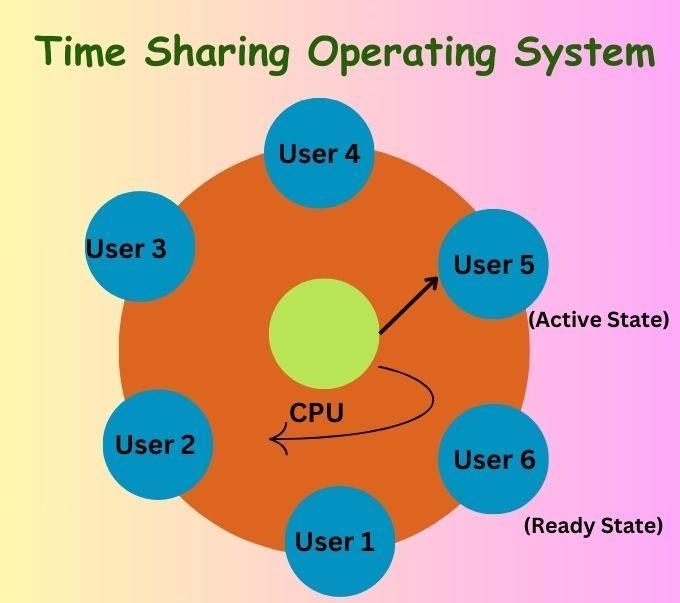Types of Operating Systems – Explained with Real-World Examples
Welcome back to our Operating System series! In the previous blog, we introduced what an operating system is and why it’s essential. Today, let’s take a deeper dive into the different types of Operating Systems, how they work, and where you’ll find them in action.
What Are the Types of Operating Systems?
An Operating System (OS) is not one-size-fits-all. Different types of devices and use-cases require different types of OS behavior.
So, OSes are categorized based on how they manage resources, handle users, and schedule tasks.
Here are the main types of operating systems:
🔹 1. Batch Operating System
Executes a group of jobs (batch) without user interaction.
How it works:
- Users submit jobs (tasks with programs and data) to the operator.
- Jobs are collected in batches and processed together.
- No direct interaction between user and system during execution.
Real-life example:
- Used in old mainframe systems (like payroll processing or bank transactions overnight).
❗ Limitation:
- No real-time interaction → delay in result or debugging.
2. Time-Sharing Operating System (Multitasking)
📌 Multiple users or tasks share CPU time simultaneously.
How it works:
- Each user gets a time slice of CPU.
- If the time expires, the OS switches to the next user.
- Gives the illusion of parallel execution.
Real-life example:
- Modern desktop OS like Windows, Linux, or macOS.
- You browse the web, run music, and write code — all at once.
Advantage:
- Fast response time, interactive user experience. 3. Distributed Operating System
📌 Connects multiple computers to work as a single system. How it works:
- Computers (nodes) are networked together.
- Tasks are split across machines to increase speed and reliability.
Real-life example:
- Used in cloud computing, Google Search, Facebook servers, Amazon AWS.
Advantage:
- High performance, resource sharing, fault tolerance.
🔹 4. Real-Time Operating System (RTOS)
📌 Executes tasks with strict timing constraints.

How it works:
- Responds to inputs or events instantly and predictably.
- Used where timing is critical — delay = failure.
Real-life example:
- Airbag system in cars
- Pacemaker in heart patients
- Industrial robots and medical devices
Advantage:
- High reliability and precision
🔹 5. Network Operating System
📌 Supports network-based file sharing, printing, communication between devices.

How it works:
- Runs on a server and manages network resources.
- Users can log in remotely and access files/printers.
Real-life example:
- Windows Server, UNIX/Linux-based servers.
Advantage:
- Centralized control, secure data access across systems.
🔹 6. Mobile Operating System
📌 Designed specifically for smartphones and tablets.
How it works:
- Built for touch-based UI, low power use, and mobile hardware.
- Comes with app stores, notification management, and background services.
Real-life example:
- Android, iOS
Advantage:
- Optimized for small screens, apps, and mobile features.
Summary Table
| OS Type | Key Feature | Where It’s Used |
|---|---|---|
| Batch OS | No interaction, batch job execution | Legacy systems, banks |
| Time-Sharing OS | Multitasking, interactive | Personal computers |
| Distributed OS | Multiple machines act as one | Cloud, big data systems |
| Real-Time OS | Fast response, time-critical tasks | Medical, automotive, robotics |
| Network OS | Shared network resources | Servers, enterprises |
| Mobile OS | Designed for mobile devices | Phones, tablets |
Real-Life Analogy
Think of OS types like different drivers for vehicles:
- A race car driver (RTOS) must react instantly.
- A bus driver (Time-sharing) gives each passenger a ride in turns.
- A fleet manager (Distributed OS) coordinates multiple vehicles to deliver faster.
Final Thoughts
Each type of operating system is built to solve specific problems and optimize performance in its own environment.
Understanding their roles helps you appreciate how diverse and intelligent modern computing has



